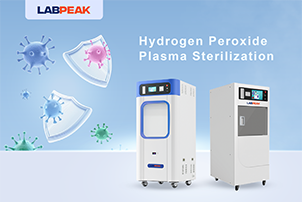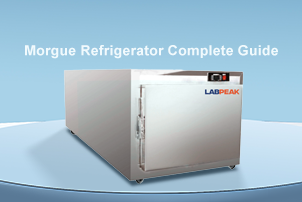Laminar flow cabinets provide a sterile environment for samples and processes, effectively reducing dust and particle contamination. It comes in a variety of types with different features and specifications to continuously keep laboratory items clean and sterile. Flow benches realize unidirectional flow of air on the benchtop through a built-in filtration system, thus creating a clean, sterile environment and ensuring that all types of laboratory operations are carried out smoothly under contamination-free conditions. Choosing the right type and ensuring its long-term stability is the key to product safety and user comfort.
How Laminar Flow Cabinets Work
Air is drawn in and out through a HEPA filter, which removes unwanted particles and potentially contaminating particles. Laminar flow cabinets work by moving air at an even and steady rate through a constant stream of air.
There are two common types of laminar flow cabinets: High Efficiency Particulate Air (HEPA) filters and prefilters.
How Laminar Flow Cabinets are Made
To eliminate the buildup of bacteria and other microorganisms, almost all laminar flow cabinets are made of stainless steel. These laminar flow cabinets are also known as clean benches because they filter out all impurities and make the working environment clean and dust-free.
How should laminar flow cabinets be maintained
Blower:
Blowers are critical to the effectiveness of the hood. Each staff member in the lab has access to a flow cabinet with sliding glass that the staff member can lift to access any item. When the glass is lifted, the blower inside the hood exhausts the air, preventing outside air from mixing with the sterile air inside the cabinet, thus maintaining a clean environment. The blower must be maintained in a timely manner to ensure that it blows air at a strong and consistent rate.
Filter:
The filter is the main component of the laminar flow cabinet and is responsible for capturing fine particles that flow into the cabinet. These particles contaminate the air inside the laminar flow cabinet and should be filtered out. Each laminar flow cabinet filter has a different life expectancy and should be replaced regularly. Be sure to change your laminar flow cabinet filters regularly to ensure their efficient operation.
Every machine in the lab requires regular maintenance and inspection to ensure proper operation, and the same is true for laminar flow cabinets. Of all the machines in a laboratory, laminar flow cabinets are one of the necessary devices to ensure that the air in your workspace is sterile.
Laminar flow cabinet types:
Horizontal laminar flow cabinets:
Laminar air flow chambers are named for the way the air circulates inside them. The primary purpose of this type of laminar air flow cabinet is to protect the substances in the workplace, not the safety of the laboratory staff.
In this type of laminar air flow chamber, the air flows in from higher up and horizontally through the sterile area. The chamber has a huge filter that covers the wall directly in front of the staff in the work area. This type of laminar air flow cabinet is designed to provide a spotless workspace for laboratory staff. The unit performs well due to the constant positive pressure.
Vertical Laminar Flow Cabinets:
Vertical laminar flow cabinets have roughly the same efficiency as horizontal laminar flow cabinets, but the air is delivered differently. Due to the type of enclosure the unit is equipped with, the airflow is directed from the top to the work area and directly downwards. The hood of a vertical laminar flow cabinet contains an air filter located directly above the work area. Air from the laboratory work area flows through an opening in the bottom of the enclosure. Unlike horizontal laminar flow cabinets, vertical laminar flow cabinets secure both the work area and the laboratory staff.
Applications for Laminar Flow Hood Systems
Laminar flow cabinets are particle-sensitive electronic devices that are especially suited for use in laboratories. Laminar flow cabinets are manufactured in a way that is customized to the laboratory in which they are applied. They can also be used in general laboratories, mainly in the medical, industrial, electronic and pharmaceutical fields.
Thus, flow hoods can be used anywhere in a laboratory where air and environment need to be kept fresh and sterile.
Factors to Consider When Buying Laminar Flow Cabinets
The main purpose of a laminar flow cabinet is to protect products from indoor contaminants. It provides clean air through ULPA filters and blows it as a particle-free airflow to the work surface.
- Laminar flow type: Choose horizontal or vertical flow, depending on application requirements and space layout.
- Filtration efficiency: HEPA or ULPA filter performance to ensure efficient removal of airborne particles.
- Cabinet Size: Select the appropriate size according to the lab space and equipment size.
- Operating comfort: Ergonomic design, such as lighting, noise level, operating space, etc.
- Construction materials: corrosion-resistant, easy-to-clean materials can extend the service life.
- Safety performance: such as splash-proof, leak-proof design to protect the safety of operators.
- Maintenance and Replacement: Ease of filter replacement and routine maintenance.
- Certification standards: whether to comply with international or industry standards, such as ISO, NSF, etc..
- Energy efficiency and noise: energy-saving design and low-noise operation enhance the comfort of the working environment.
- Budget and after-sales service: equipment price, warranty period and after-sales service guarantee.





Get Social